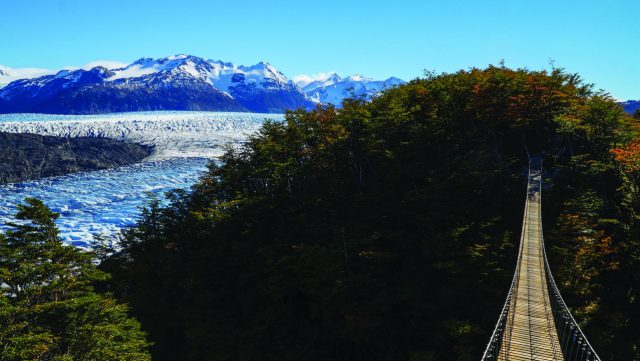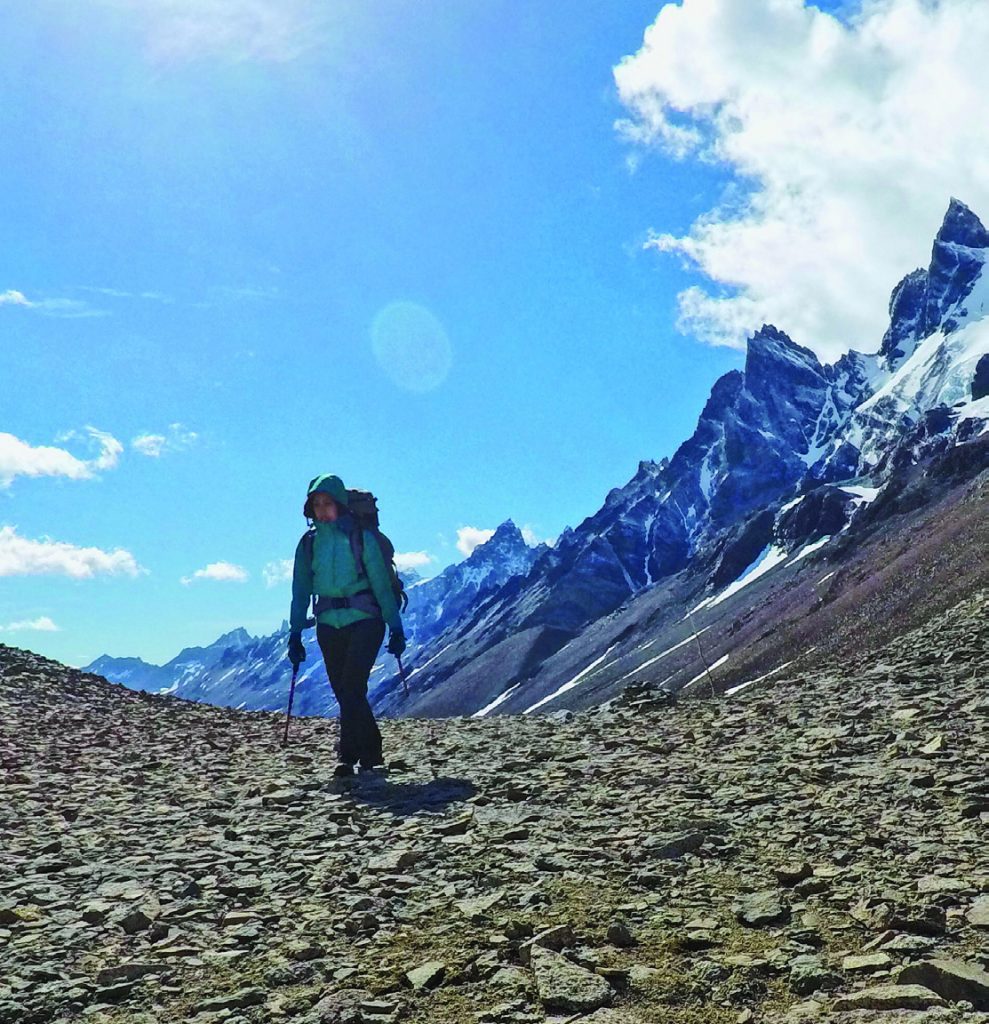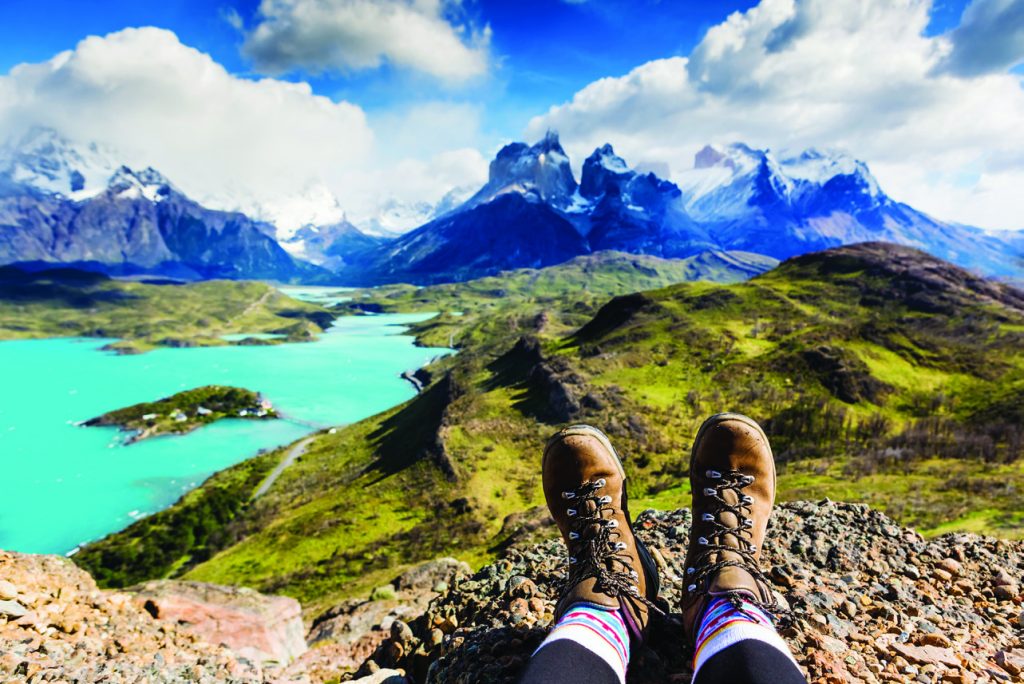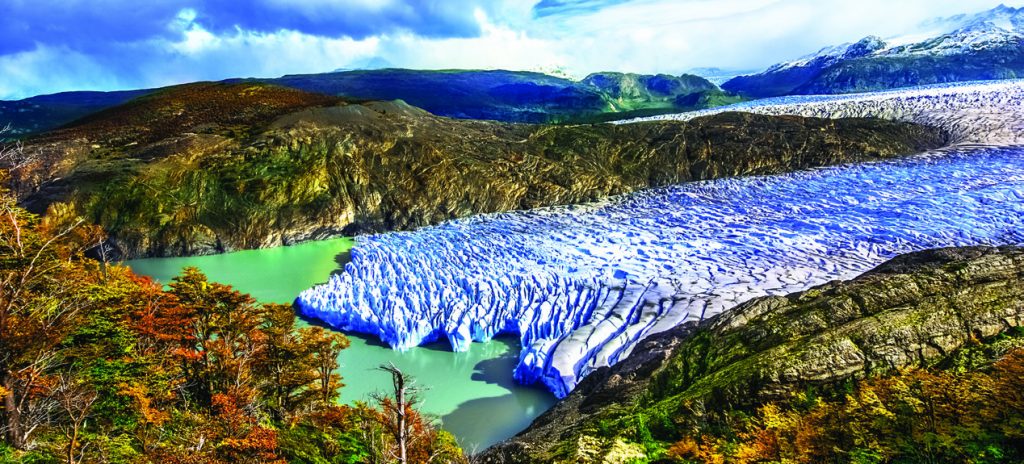Discover Patagonia, the one place in the world where the Earth’s energy is almost palpable.
By Jaspreet Narang
Patagonia, a word that easily rolls off the tongue, will have you dreaming for days about the faraway lands filled with vivid landscapes of glacier-carved peaks and fjords. Located on South America’s southern frontier occupying the majority of Chile and Argentina, Patagonia’s nature is wild, barren and beautiful. The labyrinth of rainforests, jagged peaks, and pristine rivers with glaciers that turn from white into hundreds of impossible hues of blue, have a stark beauty that is filled by silence and splendour. An incredible part of the world, Patagonia is paradise for those who enjoy hiking, or those who just want a taste of the great outdoors. The list of great hikes, treks, and walks is so overwhelming; you will be spoiled for choice. Beware though, as Patagonia can be as treacherous as it is stunning. You need to be prepared in order to truly enjoy its wonders, as the weather is ever-changing and trekking conditions can be tough.
Our Independent Hiking Experience in Patagonia
Within its enormous scale, Patagonia offers a wealth of landscapes that I was determined to explore on foot. While it is possible to go on multi-day guided hikes, my fiancé and I decided to hike on our own. The eight-night, nine-day, 130km O-Circuit in Torres del Paine would prove to be our adventure of a lifetime.
A few things we knew prior to embarking on this journey were that there would be no electricity, food and connectivity of any form. All we had at our disposal were designated camp grounds, fresh glacier water in the river streams, and if we were lucky enough, a shower at the campsite. However, we would have to forego the luxury of a hot shower.
Preparation
In order to prepare for our hike, we needed to purchase a two-man tent, two sleeping mats, two sleeping bags, gas canisters, cooking gear, camping cutlery, a portable water filter, water bottles and sufficient food to last us nine days. All this, including our hiking gear, had to fit in our backpacks, which meant we were each carrying approximately 17 to 20kgs (about 40 percent of my body weight) on our backs, while hiking the mountainous terrain. Most importantly, we needed to figure out exactly which route to take and how to navigate to the designated camp sites. Not getting lost would be our key to survival!
Needless to say, the O-Circuit was the most mentally, physically and emotionally demanding adventure I have ever embarked upon. Patagonia at its truest form will inspire you, overwhelm you, take your breath away, show you the power of nature and break you with it.
Conquering the Peaks of Patagonia
We had bruised hips, stiff necks, blistered feet, dark circles under our eyes, pain and soreness all over. There were days where we hiked in pouring rain with heavy winds of up to 100km per hour, and we were wet and freezing from head to toe. The kind of winds that were so powerful, they broke our aluminum tent poll in half, sending the broken part directly through our waterproof tent. There were also days where we hiked in the scorching sun, left in awe by the majestic views of never-ending mountain ranges, glacier lakes and ice fields. There were even days where we built our tent while it was snowing, and bundled ourselves in over six layers just to keep warm at night, as the temperatures crawled down to the negatives. But most days gave us all four seasons to grapple with in the span of minutes.
We hopped on rocks across massive waterfalls, walked through deep forest muds, hanging bridges, ice, and snow, along exposed cliffs. The uphill climb was steep and unforgiving. There was this one day in particular we were dreading, the day we had to cross the infamous John Gardner Pass. Breathless, yet relentless, we forced ourselves over the snow-capped mountain pass. A 1,200m ascend packed into a short 2,500m distance. Nothing could quite prepare us for that brutal ascend, or our fight to hold our ground up against those winds. We were rewarded by splendid views of hundreds of acres of ice fields as far as the eye could see.
During our days hiking, we disconnected from our world completely, and instead threw ourselves into the world of nature. We connected with Earth. Our life was Patagonia. Our life was keeping warm in the cold windy nights, building and dismantling tents, rationing and cooking the food we packed across the nine days, and finding the next water source. To worry solely about basic survival is the most liberating form of being human I have ever experienced.
The Impact of Climate Change
No place on the planet is fully at rest, and unfortunately for us, during our time there, we witnessed the remains of three soccer fields of ice carved out of the fields, melting away into the ocean. Climate change is the gravest danger to the Chilean fjords. According to National Geographic, 46 of the 48 glaciers in the Southern Ice Fields are retreating; one is stable and only one, Pío XI, is advancing with its ice nearly always at the melting point. Pío XI is clearly an anomaly in a melting icescape.
Helpful Travel Tips
The best time to visit Patagonia is between December and February, as these are considered the summer months. Although bear in mind that summer is a loosely-used term to define Patagonian temperatures ranging between 0 to 25 degrees.
As Patagonia occupies both the southern region of Chile and Argentina, you will find yourself constantly at border patrols between various hikes.
Torres del Paine National Park is Chile’s most pristine hiking area, while Los Glaciares National Park remains as Argentina’s gem.
For the adventure-seekers and outdoor lovers, I highly recommend the O-Circuit of Torres del Paine and the Huemul Circuit of Los Glaciares.
On the Chilean side of overnight hikes, camp sites are limited and need to be reserved and paid for two to three months in advance, while the Argentinean hikes do not have camp ground reservation rules. However, this is likely to change soon as there is an increase in adventure travellers.
If you plan on hiking independently, it is important to do your research thoroughly and have the right equipment and gear required for such a demanding journey









